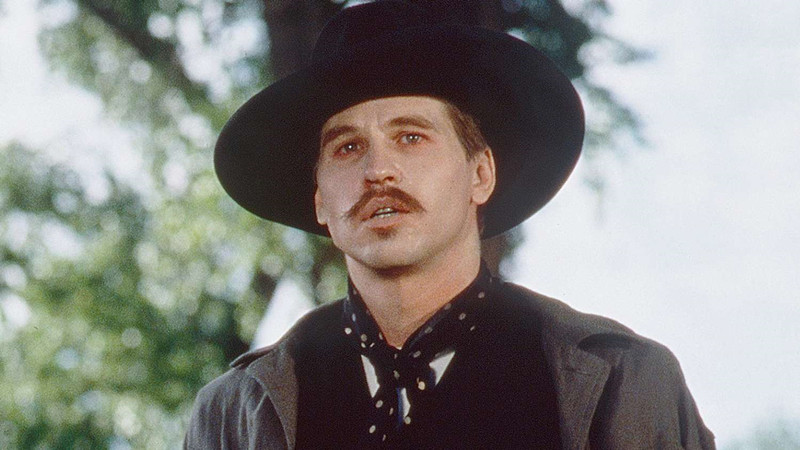
It feels strange that, despite two Westerns taking home the Best Picture Oscar in the 1990s, the genre has few other entries in that decade that stand tall and proud. Perhaps the reason for this is that those two films, Dances With Wolves and Unforgiven, set such a high bar that other directors steered away so as not to seem detrimental.
Moreover, the 1990s was getting increasingly enamoured with making long historical epics, shifting the timeline away from America’s 19th century and deeper into the past. To this extent, these ten Westerns, largely released in the first half of the decade, galvanised an overall appreciation in the period piece, with historical films packing out cinemas and awards ceremonies.
1. Dances With Wolves (1990)
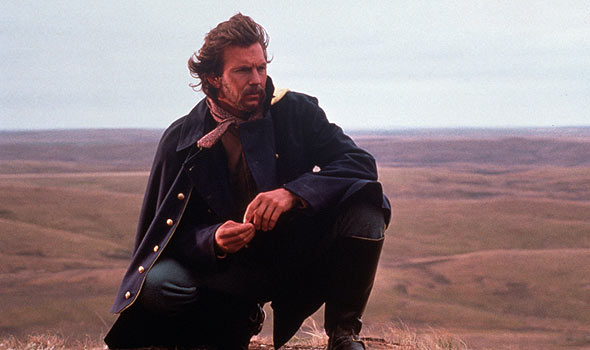
Before 1990, only one Western had won the Best Picture Oscar. That film was Cimarron (1931), a hideously dated story that, in a post-Killers of the Flower Moon world, has been made even more grotesque in its attitude towards Manifest Destiny and the Native American Indian plight. Dances With Wolves (directed by and starring Kevin Costner at the height of his powers) winning the Oscar was a major correction 60 years later. Not even the thinly veiled criticism of ‘white saviorism’ or the ‘Goodfellas should have won’ crowd can ruffle the edges of this irresistible classic.
Costner plays John Dunbar, a Union Lieutenant who requests to be stationed out on the western frontier before it vanishes. Alone in the prairies, Dunbar gradually integrates himself with the Sioux tribe and earns his native name, Dances With Wolves. Its story has been mimicked numerous times but few have captured the sweeping romance between a man and a culture with such picturesque cinematography as Costner does here.
It also boasts one of the finest scores by the legendary John Barry and some wonderful animal performances. The film’s mournful ending seems to suggest that even with the assistance of a white man from a position of power, the grinding gears of westward expansion would have destroyed indigenous culture regardless. That this film catalysed a growing interest in Native American history is a huge win despite who the story is being told by.
2. Quigley Down Under (1990)
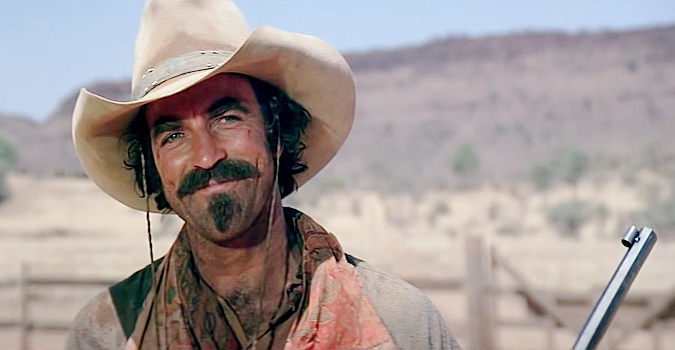
There is always an Australian entry to be welcomed. Unfortunately, this is still mostly American made but the story, about a US sharpshooter (Matthew Quigley, played by Tom Selleck) who travels to Australia for a protection job, gives audiences a more mainstream look at the Outback and its Aboriginal inhabitants. Alan Rickman, in his deliciously enjoyable villain era, is the homeowner who wants Quigley to shoot down the elusive Aboriginal people nearby. Quigley’s rejection of this job leads to conflict.
Selleck is a reliable gunslinger, sporting the kind of moustache that would make a walrus envious. The long-range shooting scenes retain the phallic nature and sense of fun that Sergio Leone brought to his Dollars trilogy. But as enjoyable as the film is, it never truly embraces the Australian elements or gives the Aboriginals a distinctive personality beyond what they represent. Perhaps if this film had come out a year after Dances With Wolves then the storytelling would be cleaner and more emotive.
3. Unforgiven (1992)
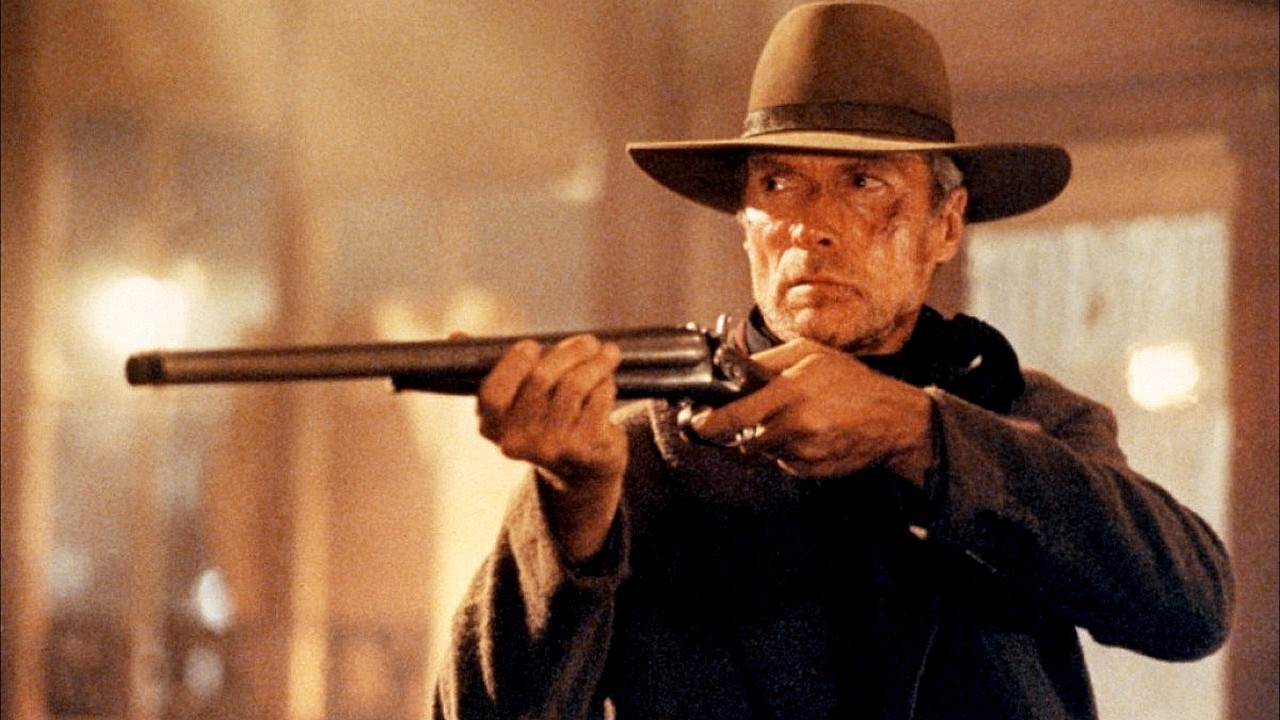
It does not take long to read reviews of recent movies and see the phrase ‘the best Western since Unforgiven.’ Like The Dark Knight or The Godfather, Clint Eastwood’s Oscar-winning Revisionist mega-classic is so synonymous with an entire genre that it towers over all new releases like a disapproving god. By the time the dust settles, most new Westerns fall deep into Unforgiven’s shadow and never again see the sunlight. Its ongoing status has endured for the simple reason that it really is quite good. That and the reflective nature of its director-star’s career has kept it well placed in the Hollywood canon.
Eastwood plays William Munny, a widower who struggles to farm and raise his children. His former career as a contract-killer has been buried deep within a heart of stone. Whiskey and vengeance will eventually release it as he and Morgan Freeman’s Ned return to their horses and guns to avenge a slashed-up prostitute.
Musing on violence, gun-control, sin, storytelling and human nature, Eastwood loads his film with a quartet of astonishing performances: himself, Freeman, a ferociously scene-stealing Gene Hackman as Little Bill, and a magnificent turn from Richard Harris as English Bob, whose role may seem inconsequential to the story but he brings so much to the pacing and subtext it’s hard to imagine the film working without him. Hackman’s snarl of ‘misfire!’ remains an indelible film moment.
4. Geronimo: An American Legend (1993)
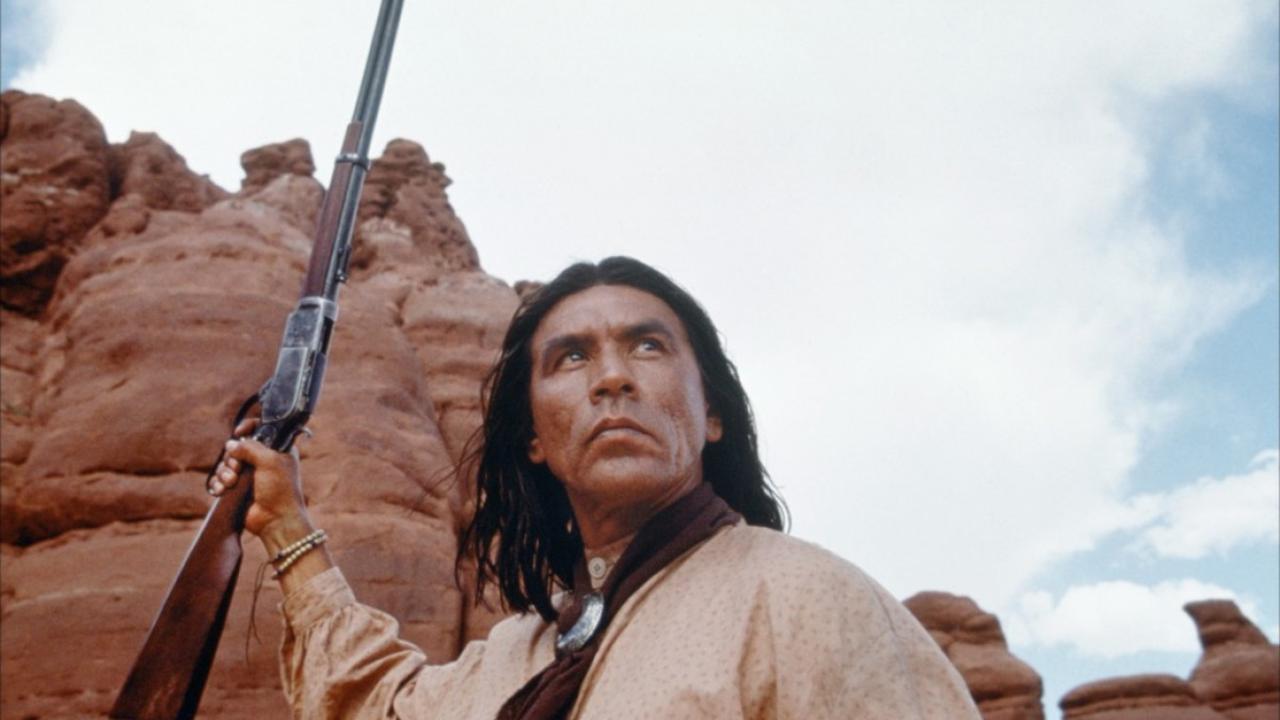
Walter Hill stated that “every film I’ve done has been a Western,’ alluding to his contemporary stories navigating dramatic problems that do not rely on the conventional approaches to law and order – his characters have to seek justice on their own. This analysis of the genre is gloriously purposed to his 1993 film Geronimo: An American Legend, a film undoubtedly shaped by the mainstream reaction to Dances With Wolves and its indigenous focus.
Wes Studi is ideal casting as Geronimo. Flipping from his antagonistic role as Magua in The Last of the Mohicans to the Apache rebel warrior Geronimo showcased Studi’s range as Hollywood’s leading indigenous actor. It is a colossal shame that Studi has not been used as frequently since, aside from Hostiles (2018). Whilst playing the eponym, Studi does not hog the screen as the story is equally embroiled with the US military, where Jason Patric plays the 1st Lieutenant trying to force Geronimo’s surrender, Robert Duvall plays the Chief of Scouts, Gene Hackman plays the Brigadier General and a very young Matt Damon plays the 2nd Lieutenant. It is an impressive cast no doubt, with Hackman minimising his Little Bill venom from Unforgiven.
The box office shortcomings and limited legacy have reduced Geronimo to an ‘average’ Western, but the film’s narrative choices in sidestepping history for entertainment makes for a compelling analysis on the Hollywood treatment of legends.
5. Tombstone (1993)
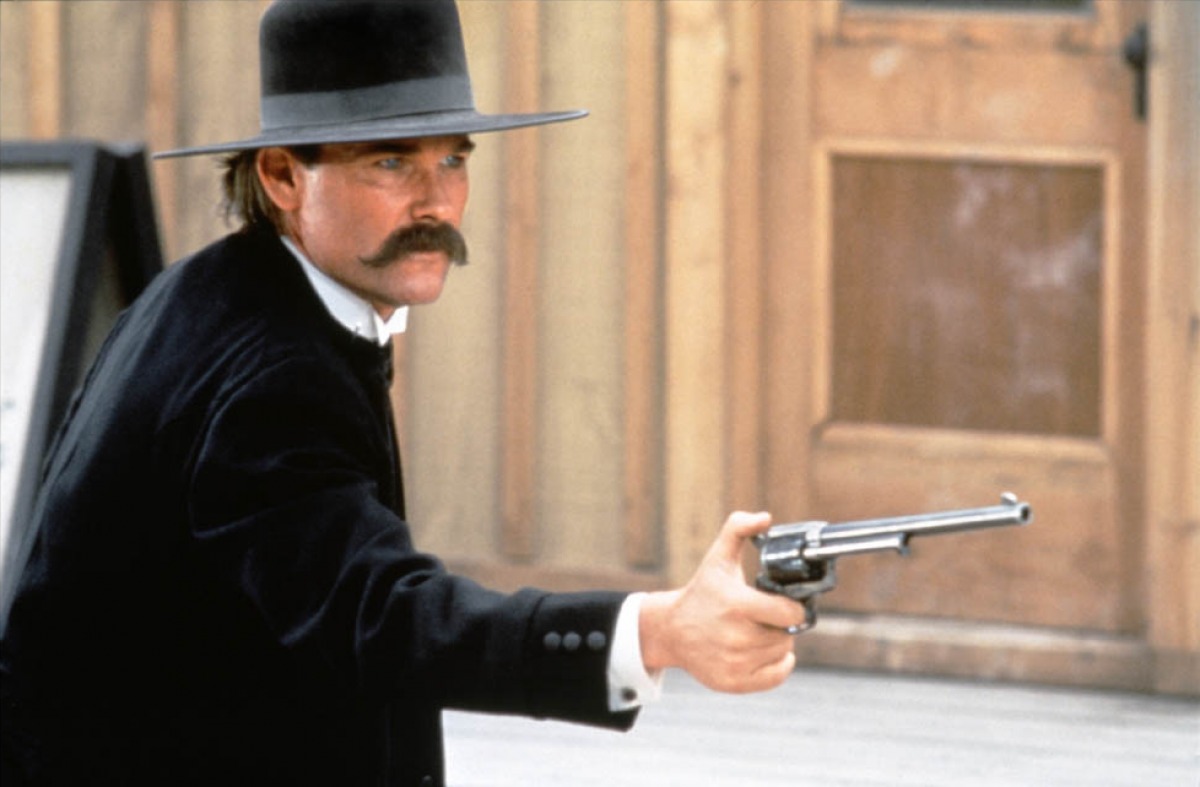
Val Kilmer’s performance in Tombstone sits outside the gates of heaven along with Tom Cruise in Collateral, Toni Collete in Hereditary and the entirety of Heat. All of them are united by the egregious error that the film gods failed to even nominate them for awards, let alone give them the wins they deserved. As Doc Holliday in Tombstone, Kilmer turns a weak, terminally ill gambler into a force of eloquence, speed and utter danger, all wrapped up in that immortal line of endless charisma: ‘I’m your huckleberry.’
Tombstone is a cool Western. Its cast is a cornucopia of awesome character actors from many beloved films: Kurt Russell, Sam Elliot, Bill Paxton, Michael Biehn, Powers Boothe, Thomas Haden Church, Stephen Lang, Charlton Heston and even Robert Mitchum as the narrator.
The story of Wyatt Earp, his brothers, and Doc Holliday is well known and often told. George P. Cosmatos directs with hip charm, punctuating the more classically told film versions with a stylish take that threatens to be the best of its rivals. Furthermore, the renowned Gunfight at the O.K. Corral is a historically accurate 30 second sequence that is not even the story’s climax, with Kilmer’s shotgun twirling skills delighting every viewing (just don’t count the rounds fired).